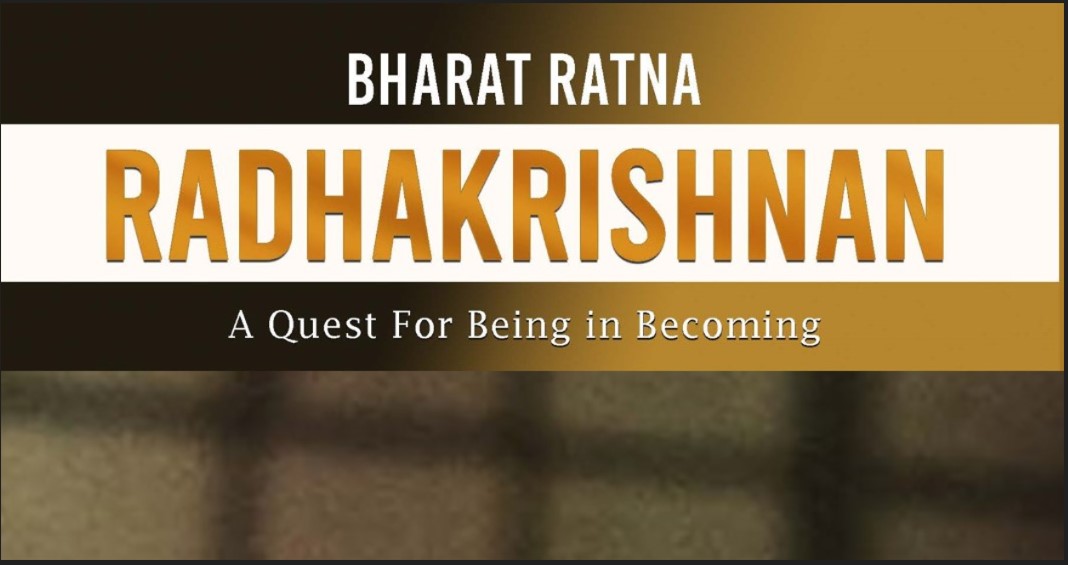Visvamanav: The Philosopher as Statesman
Introduction
Every culture has a vision of a philosopher and a statesman presiding over its destiny. The wisdom of the philosopher will guide the statesman to govern the realm enhancing the prosperity and wellbeing of the people and ensuring their security. There is also the Platonian vision of the Philosopher-Statesman, in which the ruler combines in himself the strength of the statesman and the knowledge of the philosopher. These are two different categories in the first, the philosopher is an advisor; in the second, the statesman is himself a philosopher. There is, however, a third, unique category, in which it is the philosopher who becomes a statesman, not the other way around. This rare category is exemplified by a rare individual Dr Sarvepalli Radhakrishnan, a world-renowned philosopher and academic, one of the most influential public intellectuals of the 20th Century. He was widely read in the philosophies of East and West and was seen in his lifetime as a bridge builder between the two. It was Radhakrishna’s explanation of Hinduism and Vedanta which greatly influenced the Western perception of what constituted religion in general and Hinduism in particular. Along with Mahatma Gandhi, Jawaharlal Nehru and Rabindranath Tagore, Radhakrishnan was one of the most recognizable Indians outside the country.
Radhakrishnan: A Vishvamanav
Radhakrishnan became a member of the Constituent Assembly of India, India’s representative at UNESCO, India’s second ambassador to the Soviet Union, the country’s first vice-president and chairman of the Rajya Sabha, and its second president. The conventional understanding is that the president and vice-president, in the Indian constitutional scheme, are expected to be mere rubber stamps of the government of the day. The experience of Dr Radhakrishnan, then, should have been on these expected lines. But a reading of the years during which Dr Radharishnan held office shows that he was far more proactive behind the scenes than is usually assumed while maintaining all constitutional norms. But before we venture to examine the ‘political’ years, we need to first have an understanding of his life to that point, and the philosophical perspective that created the contours of his worldview.
Sarvepalli Radhakrishnan was born in 1888 in Tirutani, in modern-day Andhra Pradesh. He went to a school in nearby Tirupati, a pilgrimage town. The religious devotion that permeated the very air of these two towns, with their emphasis on personal experience of the divine, was clearly a great inspiration and influence on his young mind. Another formative factor was the fact that he studied in a missionary school. He saw the devotion shown on a daily basis to their Christian faith and came for the first time across denunciations of Hinduism.
The milieu in which Radhakrishnan grew up was that of an India reawakening, rediscovering its past, and the first stirrings of nationalism. He noted later that his influences at the time were the writings of Swami Vivekananda, VD Savarkar’s account of the 1857 uprising, and the activities of the Theosophical Society.
At Madras (now Chennai), he studied at Madras Christian College. It was here that he first encountered the philosophers of the West, and came under the spell of AG Hogg, who differentiated between theoretical knowledge and knowledge derived from personal perceptions. Another influence was the systemic castigation of Hinduism he came across, which led to his earliest forays into an understanding of Hinduism which lasted throughout his life.
After completing his thesis in 1908, Radhakrishnan began his teaching career and ultimately moved to Calcutta where he took up the George V Chair in Philosophy, became Vice Chancellor of Andhra University and later on of Benares Hindu University. In 1936, Oxford University appointed him to the HN Spalding Chair of Eastern Religions and Ethics. His rapid and enormous scholarly output made his reputation both in India and abroad, and in 1931 he was knighted. During this time Radhakrishnan did not take any overt political stand, but it was impossible for him to avoid the turmoil that the nationalist movement unleashed, and be left unaffected by it. While met and maintained relations with both the nationalist leaders and British officials, and made plain where his preferences lay, he did not himself descend into the political trenches. Radhakrishnan moved into the political realm shortly after the Second World, and he remained in it for twenty years. The first move in this regard was when he became the chairman of the University Education Commission, which presented its report in 1949. Radhakrishnan’s influence can be seen in the sections devoted to the aims of university education and religious education.
At this point, we need to explore whether Radhakrishnan had anything that amounts to or is close to a comprehensive political outlook, viewpoint or philosophy. Radhakrishnan did not present his political ideas and ideals in a comprehensive manner, but they can be reconstructed based on what he wrote and said throughout his career.
The first point to note is that Radhakrishnan was an idealist. He explained it thus: “An idealist view finds that the universe has meaning, has value. Ideal values are the dynamic, the driving power of the universe. The world is intelligible only as a system of ends, it finds life significant and purposeful. It endows man with a destiny that is not limited to the sensible world. Idealism today has to reckon with our problems and help to solve them.”1
Radhakrishnan insists that man can exist only within a society: “No one can stand in proud isolation with contempt for the common herd. We can rise in the scale of being only by drawing all into ourselves. While the individual has to cultivate his own garden and integrate his own self, the self is not sharply marked off from the world, the garden is not fenced off from the rest of the universe. The world is our garden and we cannot become self-sufficient until the world is so.”2
Radhakrishnan is not concerned with the typology of a state as it exists, but with the purpose of the ideal or best state: “The importance of any nation is estimated not by its territory, population, or commerce, but by the values it has brought to the world and the degree to which they have been embodied in its life.”3
But what is this ultimate value which needs to be achieved? To Radhakrishnan, it was spiritual freedom. He noted, “Freedom has many implications, the chief one being to provide scope for the expression and development of the individual human being. All other freedoms—political, economic and social--are an indispensable end to this.”4
For Radhakrishnan, if a man is to reach his best, it means that a modern state must intervene to provide certain standard conditions for such a development to take place. For Radhakrishnan, it is not enough for the state to avoid interference in individual lives. It has to do more: “We must help to bring up the buried treasures in each individual without breaking any of it. For this, certain minimum cultural and economic conditions must be provided. That is why we have universal education as a target in our Constitution. We talk often of a socialistic pattern of society. This does not mean regimentation of the individual. In the drama of human evolution, the chief actors are the individuals, the individuals of genius. We should not allow the individuality of human beings to be crushed or even diminished by the assaults of science and technology, by the mechanization of life.”5 He adds, “When we say that it is necessary for us to feed, clothe and shelter all human beings, we are emphasizing what may be called the economic aspects of the democratic ideal. We wish to diminish wealth and poverty and to raise the living standards of the ordinary man. So long as there are people in our country who do not have a square meal a day, who sometimes do not have a roof over their heads, who sleep on the pavements of our cities, it is a challenge to us. We should combat them, abolish them if our country is to be called democratic.”6 He went on to note that all this would be impossible until and unless industrial and agricultural increased manifold. Then, and only then, could economic democracy be said to have been achieved.
For Radhakrishnan, democracy was a sin qua non, and a faith. “When we emphasise the ethical character of democracy we mean that every human has an element of rationality that it is possible for us to appeal to it. We must believe that we may not always be right, our opponents may sometimes be right. We should be modest enough to believe that there may be some virtue in our opponents also. It's this sense of humility, the sense of restraint, that democracy imposes upon us. Dissent is not treason; opposition is not rebellion. We must try to settle our problems with reason, without bitterness. Democracy and violent action are inconsistent with each other.”7 We can see that Dr Radhakrishnan had full faith in democracy in the modern sense and its ability to sustain human beings to achieve their best.
Dr Radhakrishnan led the Indian delegation to the United Nations Educational, Scientific and Social Council (UNESCO) from 1946 to 1952. He was also the chairman of the Executive Board in 1948-49. Earlier, Radhakrishnan had called for a strong international organization to be created after the end of the Second World War. But the establishment of the new United Nations ended up as a disappointment to him: “The lessons of the Second World War seem to be lost on the politicians who are trying to perpetuate their old policies of greed and hatred, which will again make a menace of the world. If this process goes on uninterrupted, this world will cease to be the home of the human species and become its grave. “8
Radhakrishna’s attempt at UNESCO was to ensure that it did not fall prey to the vagaries of the Cold War and become an instrument of the rivalries between the Western powers led by the USA, and the Soviet Bloc. He also emphasized that the culture of the West was not to dominate UNESCO and its work, and a truly international cultural spirit needed to be fostered. Needless to say, this stance of his did not win him, friends, in either bloc, but raised his and India’s international visibility.
Radhakrishnan’s understanding of UNESCO was that it should promote intercultural understanding between different parts of the world, an issue that was his constant refrain. Just before the establishment of UNESCO, he wrote, It will not do, if we merely establish the machinery which will deal with disputes as they arise; we have to examine and change, where necessary the ideas and institutions which periodically produce catastrophes. We must endeavour to establish a new social harmony in which conflicts will not arise.”9
Dr Radhakrishna was elected a member of the Constituent Assembly from the United Provinces (today’s Uttar Pradesh), on the ticket of the Indian National Congress, though he was not a formal member of the party, testifying to the great respect in which he was held. Radhakrishnan spoke for the first time in the assembly on December 11, 1946, shortly after the session began. He pointed to the destruction that had been wrought by partition. The interventions that he made were few and infrequent and did not amount to anything much.
He resigned from the Constituent Assembly upon his appointment as the Indian Ambassador to the Union of Soviet Socialist Republics (USSR) in 1949. He spent half the year in Moscow and the other half teaching at Oxford, where he was still the Spalding professor--a most unusual arrangement, to say the least. Radhakrishnan arrived in Moscow at the height of the Cold War. The Soviet leaders were very suspicious of India and believed it to be an ally of the Western poers, notwithstanding India’s claims of non-alignment. Radhakrishnan met the Soviet leader, Joseph Stalin, on January 15, 1950, for a rare personal audience which lasted three hours. Radhakrishnan wanted India to have closer relations with the Soviet Union, but the Indian Prime Minister was wary of his proposal of a friendship treaty between the two countries.
However, when the Korean War broke out in 1950, Radhakrishnan was instrumental in conducting private parleys between the Soviet Union and the American ambassador, which led the Soviets that India had a role to play in bringing about a ceasefire on the Korean peninsula. But Radhakrishnan was not happy with India’s stance at the United Nations, labelling North Korea as the aggressor. Radhakrishnan left Moscow in 1952 after being nominated for Vice-President of India under the newly-promulgated Constitution. He met Stalin a second time, in which a surreal incident took place. Radhakrishnan patted an ill-looking Stalin on the cheek and back, and rubbed his head. The soon-to-be-dead Stalin told him that Radhakrishnan was the first person to treat him as a human being, and not a monster.
Dr Radhakrishnan was elected the first Vice-President of India by both Houses of Parliament for the first of two terms—he was in office from 1952 to 1962. In 1957 he expressed his desire to step down. He was persuaded to stay on with the understanding that the President, Dr Rajendra Prasad, would step down halfway through his second term, and Radhakrishnan would succeed him. In the event, Radhakrishnan had to wait till Prasad completed his presidency.
Most of Radhakrishnan’s two terms as Vice-President were spent on tours abroad and in India, giving speeches that placed India as an ancient nation in the garb of a new state, taking its rightful place in the comity of nations, and placing its ancient culture front and centre as a necessity in the modern world. However, the most important part of his vice-presidency lay in the creation of norms by which the Rajya Sabha was to conduct its business, in his role as its Chairman. He was adamant that India should develop its conventions as regards parliamentary procedure and not just rely on British precedents. It was Radhakrishnan who asserted that Parliament consisted of two equal Houses. It was Radhakrishnan who ensured that members of the Rajya Sabha were part of the most important parliamentary committees—the Public Accounts Committee and the Committee on Public Undertakings.
Radhakrishnan was elected the second President of India in 1962 upon Prasad’s retirement. The relations between Prasad and Nehru had been frosty, with Prasad wanting more of a role in governance than Nehru felt was warranted under the Constitution. Prasad had not even been his first choice for President, that being C Rajagopalchari, who did not find favour with the rest of the Congress Party. Radhakrishnan envisaged the presidency more on the lines that were acceptable to Nehru. It was a retreat from the activist role of Prasad to a more symbolic position. It has been observed that “When one reads Radhakrishna’s speeches as Vice-President and President one might be tempted to think of them as echoes of Prime Minister Nehru’s ideas. But an important difference is discernible, and it grows much stronger in the later years, in that Radhakrishnan’s advocacy of democracy and socialism has an important detachment about it. He is advocating these policies not as a member of the political order but of the ideological order…”10
Radhakrishnan did not comment publicly on policies and events, except at least twice. The first was when the Chinese attacked India, and he praised the people for their unity in the face of the enemy. The second was when violence occurred in South India over the government’s language policy, and he publicly wondered what been the necessity for it. It is said that he had been instrumental in privately convincing congressmen that Indira Gandhi should succeed Prime Minister Lal Bahadur Shastri on his death.
Dr Radhakrishnan’s was an active but private retirement. At the time of his death in 1975, he still stood by the optimistic words he had said about the future of humankind. He believed “Ä world without fear, without anger, may seem to be impracticable. But all historical experience confirms the view that man would not have attained the possible unless time and again he had not reached out for the impossible. What man has achieved so far is immense, yet it is very small compared to what he may yet achieve. History has many surprises in store for us.”11
References
1. S. Radhakrishnan, An Idealist View of Life (George Allen & Unwin, 1932), pg 16
2. Ibid, pg 15
3. President Radhakrishnan’s Speeches and Writings, May 1962-1964 (Publications Division), pg 14
4. S Radhakrishnan, Occasional Speeches and Writings, Third Series (Publications Division), pg 3
5. Ibid, pg 286
6. Ibid, pg 286
7. Ibid, pg 287
8. S Radhakrishnan, Moral values in Literature (ibh) pg 100
9. S Radhakrishna, Is this peace (Kalyani) pg 64
10. Paul Younger, Indian Political Tradition and Radhakrishnan (Indian Philosophical Annual 1977-78), pg 128
11. President Radhakrishnan’s Speeches and Writings, May 1962-1964 (Publications Division), pg 13
Leave a comment
More articles from Society & History










